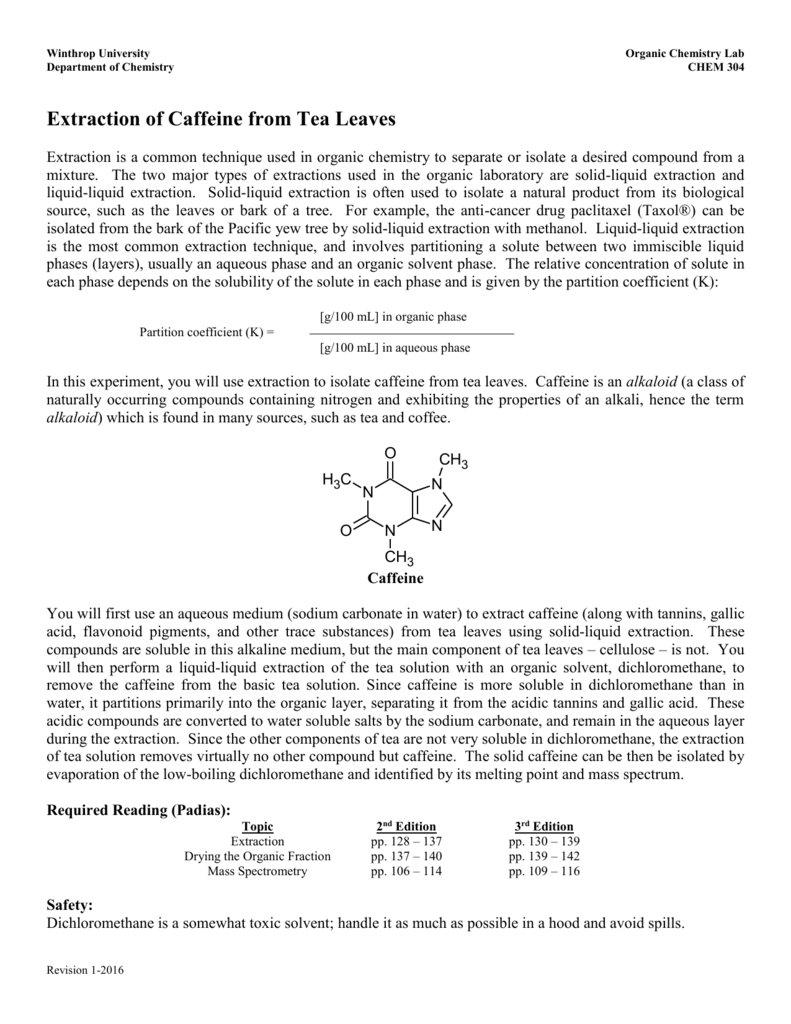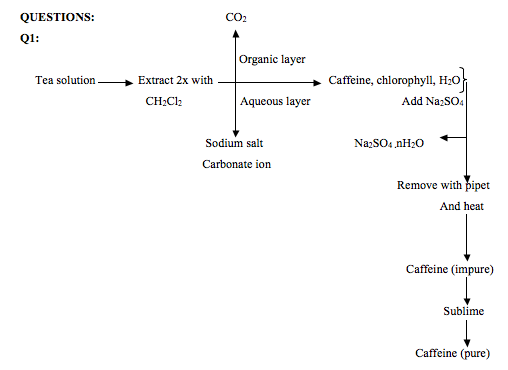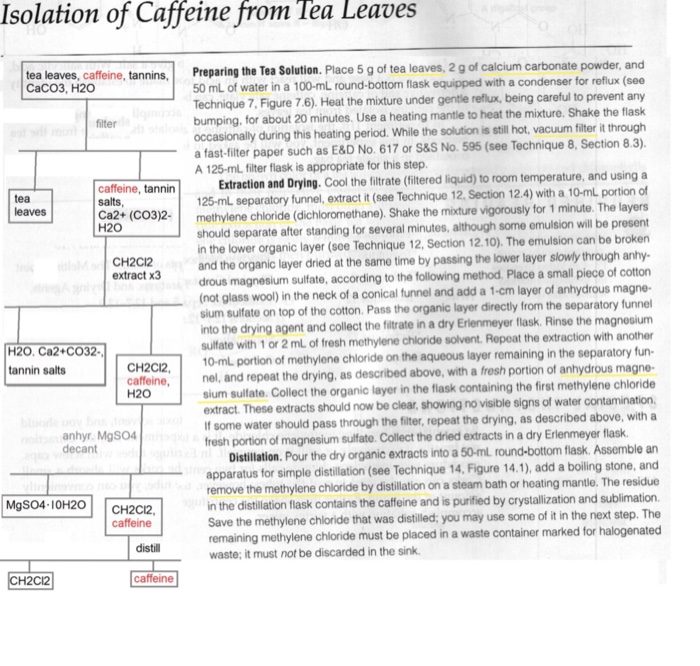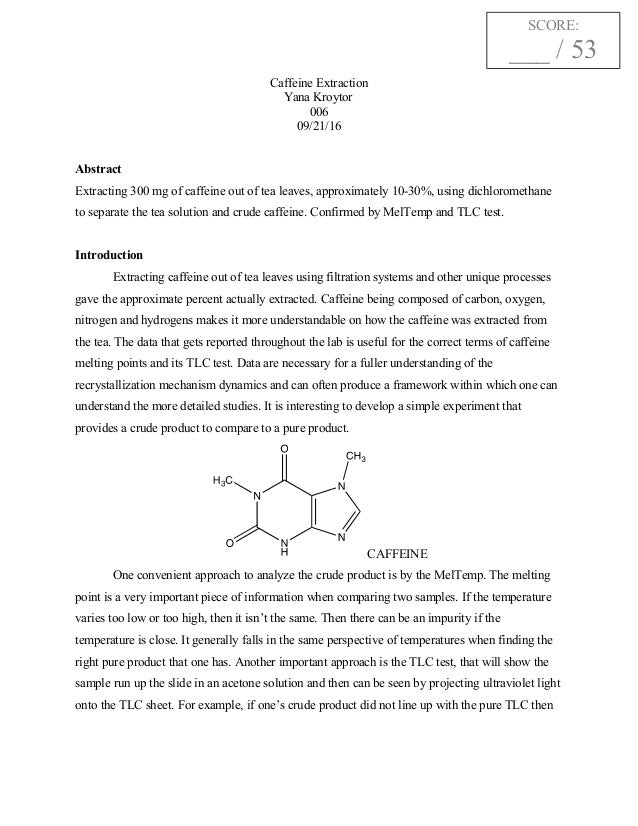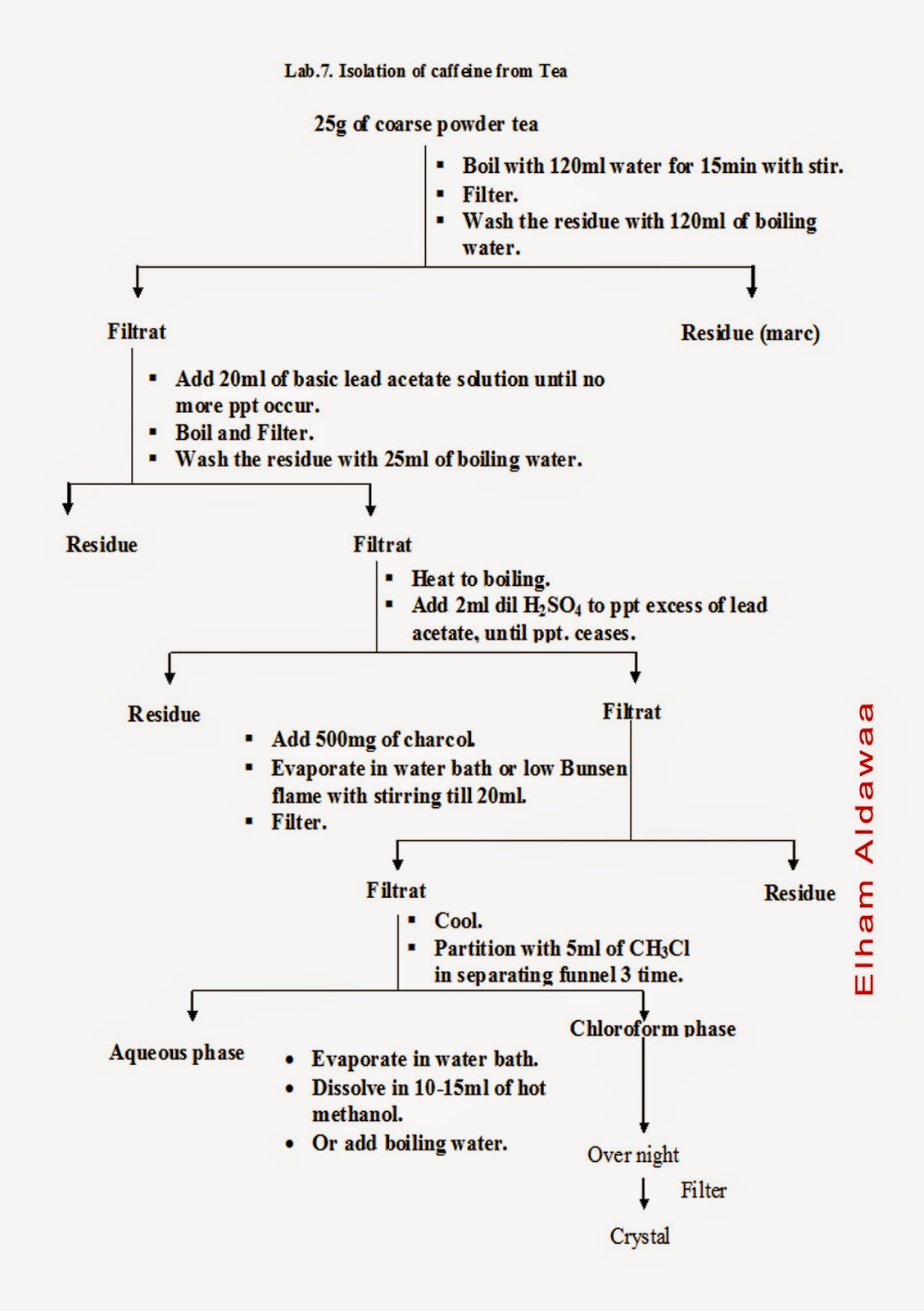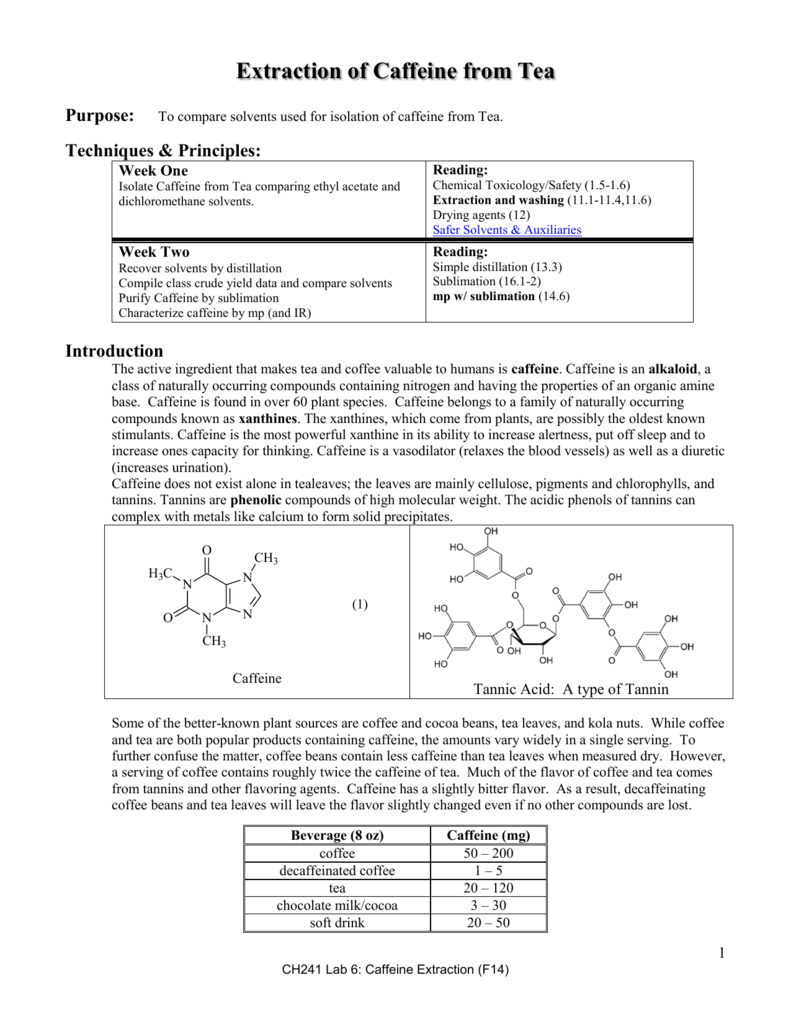Isolation Of Caffeine From Tea
Extraction techniques are used to isolate and remove particular compounds form another substance.
Isolation of caffeine from tea. Procedure add about 10 0 g of tea leaves to around 100 ml of water in a 400 ml beaker cut open the tea. This is essentially the same procedure used to decaffeinate drinks such as coffee and tea. In this experiment we aimed to extract caffeine from the tea leaves in the tea bags provided beginning with a lid liquid extraction method and then a liquid liquid extraction.
Place the tea bags into the bottom of a clean but not necessarily dry 150 ml beaker. The mass of this solid would reflect the actual yield of caffeine in the tea. To isolate the caffeine in a sample of tea it is necessary to chemically separate the caffeine from the rest of the tea mainly cellulose.
In order to isolate caffeine a difference in solubility must occur to separate the tannins into the aqueous layer. Open two tea bags by removing the staple trying to not tear the paper. Experiment 6 isolation of caffeine from tea leaves page 3 procedure 1.
However caffeine is not the only organic substance. Weigh the total contents to the nearest milligram and record this weight. The tea is steeped in very hot water for about 10 minutes this extracts most of the caffeine.
Place the tea back into the bags and staple the bags shut. Caffeine is a cns stimulant drug which is generally found in tea leaves when people drink tea a small amount of caffeine is taken by them this is the reaso. To do so caffeine must be introduced to a solvent that is both volatile and insoluble to water.
Caffeine also known as guaranine methyltheobromine and thein is defined as a naturally occurring chemical stimulant of the central nervous system that occurs in beans leaves fruit and beverages such as tea coffee and soda. Tannins are acidic compounds with a high molecular weight that have. Caffeine lab 1 isolation of caffeine from tea in this experiment caffeine will be extracted from tea leaves where it is about 5 present using hot water.
The procedure used around the world to make a cup of tea will be used in the lab today. A perfect example is methylene chloride. Isolation of caffeine from tea.
Sodium carbonate is basic. In this experiment caffeine was isolated from tealeaves through extraction distillation and sublimation.
